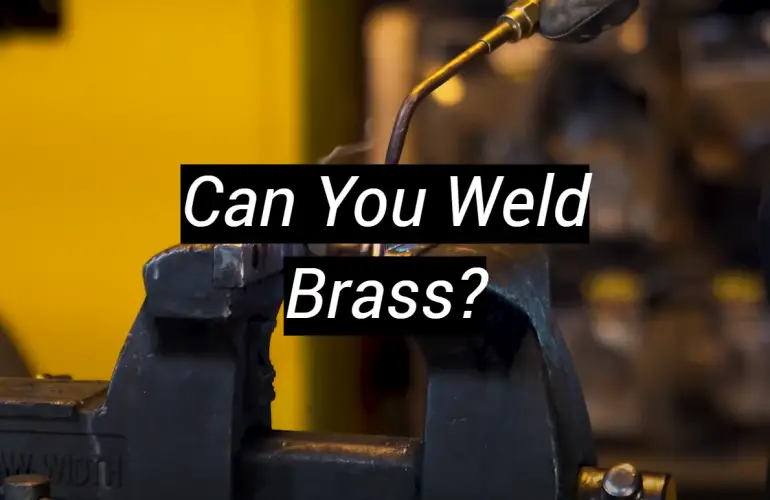Welding is a great way to join two pieces of metal together, providing strong bonds and lasting results. But when it comes to specific materials, such as brass, there are some important considerations for ensuring successful welds.
In this blog post, we’ll look at the basics of welding brass and provide tips on getting the best results possible. Read on to learn more about one of the most useful joining techniques you can use in your workshop!
Uses of Brass
Many industries like using brass because it is strong and does not corrode easily. It can be made into different shapes, which makes it good for things like valves and plumbing fixtures.
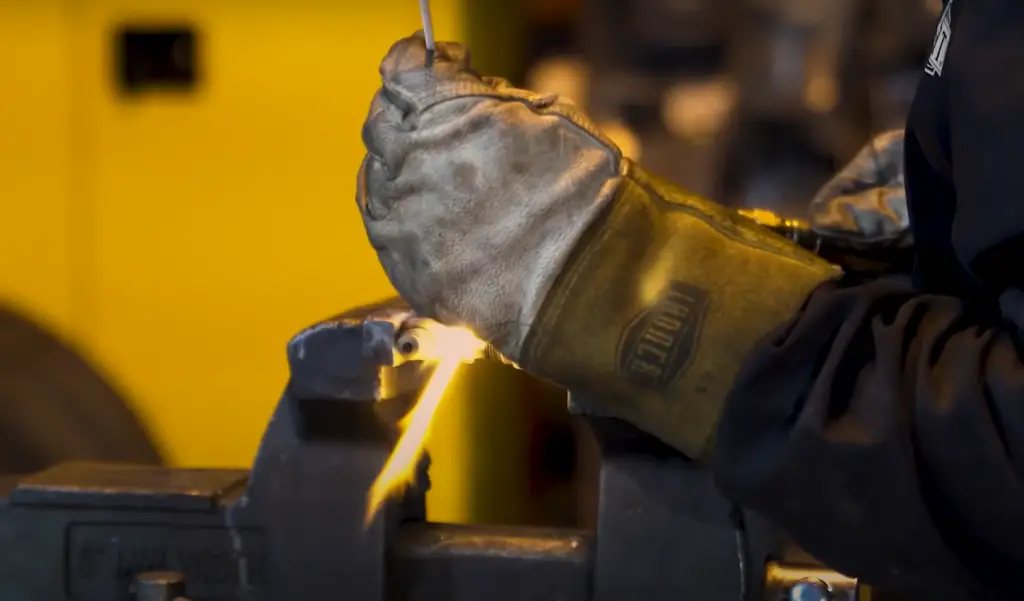
For hobbyists, brass can be great for things like jewellery and decorative items. It’s malleable but also offers some strength, so it’s a popular choice of metal for those crafting activities.
Can You Weld Brass?
The simple answer is yes, you can weld brass and other copper alloys. However, it can be more challenging than welding steel because the melting point of brass is higher.
That means that when you’re welding brass, you need to make sure your equipment is able to reach and sustain the right temperature for successful joining.
How to Weld Brass to Brass?
When welding two pieces of brass together, you need to keep a few things in mind:
- Choose the right equipment. You’ll need a high heat MIG or TIG welder and some flux core wire that is made for use with copper alloys.
- Make sure your brass is clean by using an appropriate cleaning agent. A wire brush can help to remove any oxidation build-up on the surface of the metal.
- Preheat your brass pieces before welding by using a torch or other heat source. This will make them more malleable and easier to join together.
- Use a low amperage setting, as too much current can cause the brass to crack or become brittle.
- Use a filler metal that is compatible with brass, such as copper-phosphorus or silicon bronze. This will ensure the strongest bond possible between your pieces. [1]
MIG Welding Brass
MIG welding is often the preferred method for brass welding projects.
It is important to understand that there is no single “right” setting for MIG welding brass. This will depend on the type of brass being used, the size and thickness of the pieces, and other factors.
For the best results, you should try different settings. This way, you can find what works best for your project. Another good idea is to practise welding brass on scrap pieces before trying to weld two actual pieces together.
TIG Welding Brass
TIG welding is another popular choice for brass welding. This technique involves using a tungsten electrode and an inert gas to form the weld.
The process requires more skill and practice than MIG welding, but it offers some advantages. For example, with TIG welding you can get cleaner, stronger welds that are less likely to crack. [1]
Flame Welding Brass
Neutral Flame Brazing
For projects that need brass to be joined without melting, neutral flame brazing is a good option. This means using a torch and flux to join the metals together without heating them up until they melt.
Neutral flame brazing is often used in plumbing applications because it provides a secure and reliable joint. Keep in mind that this technique still needs to be done with the right techniques and tools for the best results.
Carburizing
Carburizing is another way to join metals without melting them. This involves using a carbon-rich compound that reacts with the brass and binds the pieces together.

This method is great for joining metals with different melting points, such as brass and steel. It’s also good for creating stronger joints than you would get with a normal welding or brazing process.
Carburizing is not used as much with brass because it can be difficult to get the right results. This technique is best used by experienced welders and hobbyists who understand how to apply it correctly.
Oxidizing
If you want to join brass and steel, oxidizing is a good option. This involves using an acid-based solution that causes oxidation on the metals’ surfaces and binds them together.
If it is not done right, the joint will be weak and might crack. To avoid this, it is best to practise on some extra pieces before using this technique for a real project.Safety Equipment
When you weld brass, you need to have the right safety gear. This includes a welding helmet, gloves, and an apron. You also need to make sure there is good ventilation around your workstation so you don’t get hurt from the heat.
Steps for Brass Welding Preparation
Cut Brass Pieces
Before you start welding, you need to cut the pieces into manageable sizes. If you are using MIG or TIG welding, it is best to make sure that your pieces fit snugly together.
Bending the Brass
For certain projects, you might need to bend the brass pieces. This can be done with a hammer or a press. It is important to make sure that your bends are even and without any kinks. [2]
Get Your Working Area Ready
Before you start welding, make sure your work area is clean and free of distractions. It is also important to make sure that all tools are in good working order.
Clean Your Pieces of Metal
Before you start welding, you need to make sure that your brass pieces are free of dirt and debris. You can use a wire brush or sandpaper to do this.
Get the Brass Pieces Into the Right Position
It is important to make sure that the pieces you are welding are in the correct positions before you start. This will ensure that your welding results are of a high quality.
Tips for Welding Brass
Successfully welding brass takes some practice and patience. But with the right equipment and these tips, you can achieve good results:
- Preheat your pieces to help make them more malleable before welding.
- Keep the arc as short as possible while still having enough time to make a good weld.
- Make sure to use the right filler material for each job.
- Move smoothly and slowly while welding to create a uniform bond.
- Take frequent breaks when needed to keep your focus sharp and avoid fatigue.
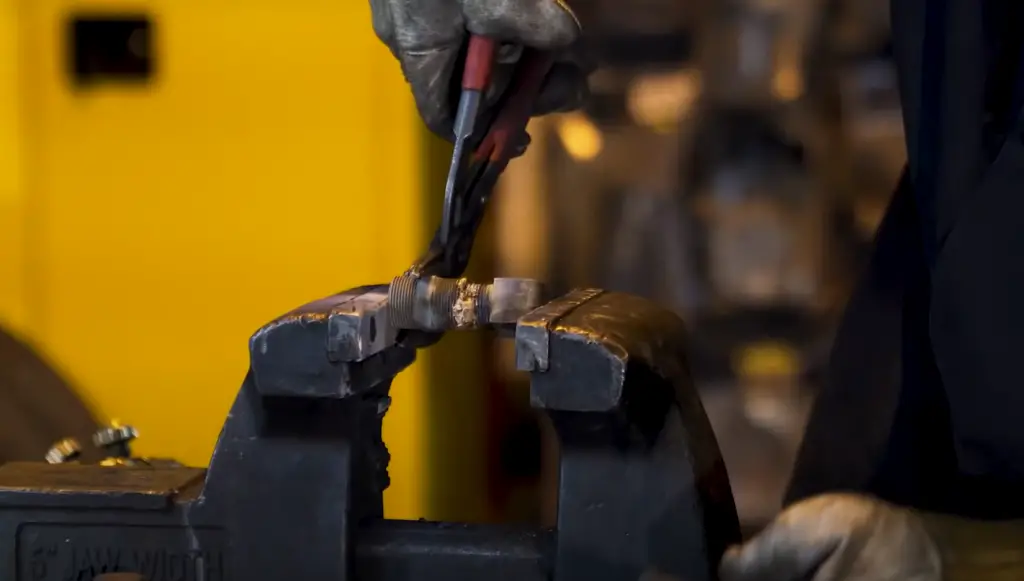
Welding brass is possible, but it takes a lot of practice to do it well. You need the right tools and safety equipment. With the right preparation, you can create strong joints that will last for years to come.
FAQ
Is brass hard to weld?
Yes, brass is one of the harder metals to weld because it has a high melting point and tends to crack easily. It is important to use the right techniques and tools for the best results when welding brass.
Can you weld brass with MIG?
Yes, you can weld brass with MIG, though it takes some practice. It is important to use the right settings and filler materials for the best results.
Can you weld brass with TIG?
Yes, you can weld brass with TIG welding. This technique is more precise than MIG welding and produces stronger joints. It also requires skill and practice to get good results.
What type of welding is used for brass?
There are three types of welding that can be used for working with brass: MIG, TIG, and oxy-acetylene welding. It is important to choose the right technique for each job.
Oxy-acetylene welding is good for joining two pieces together without using filler material, but both MIG and TIG welding create stronger bonds.
Can brass be soldered or welded?
Yes, brass can be both soldered and welded. Soldering is a good option for projects that don’t require high strength joints, while welding creates stronger bonds that are better suited for more demanding applications. It is important to use the right tools and techniques when working with either material.
No matter which technique you decide to use, it is important to take safety precautions when working with brass. Wear protective gear and make sure that you have the right tools for the job. If done correctly, welding brass can create strong and long-lasting joints.
Why cannot brass be welded?
Brass is a difficult metal to weld because it has a high melting point and tends to crack easily. It also requires special techniques and filler materials for successful welding. For these reasons, it can be challenging to achieve good results when welding brass.
Therefore, it is important to use the right tools and techniques for the best results when welding brass.
How do you join two pieces of brass together?
The best way to join two pieces of brass is by welding. MIG, TIG or oxy-acetylene welding can all be used for this purpose. It is important to use the right settings and filler materials as well as take safety precautions when welding brass.
Soldering can also be used to join two pieces of brass together but it is not as strong as welding. However, it is a good option for projects that don’t require high strength joints.
What temperature should brass be welded at?
The best temperature to weld brass is between 1,800°F and 2,100°F (980 – 1150°C). This is important because if the brass is not hot enough, the welding will not work. The temperature should also be changed depending on how thick the metal is and what kind of filler material is being used.
You need to be careful when you work with high temperatures. You could get hurt or cause a fire. To stay safe, always wear the right gear to protect yourself.
Keep anything that could catch on fire far away from where you are working. And follow all the safety instructions when welding brass.
Can broken brass be repaired?
Yes, you can repair broken brass by welding or soldering. You need to choose the right technique and use the right settings, materials and safety precautions when working with brass. If you do it correctly, you can make a joint that will be strong and last for a long time.
Which filler is best for welding brass?
The most common filler materials used when welding brass are nickel-silver brazing rods and copper-silicon alloy. Both have good flow characteristics and high strength at elevated temperatures, so they can be used for a variety of applications.
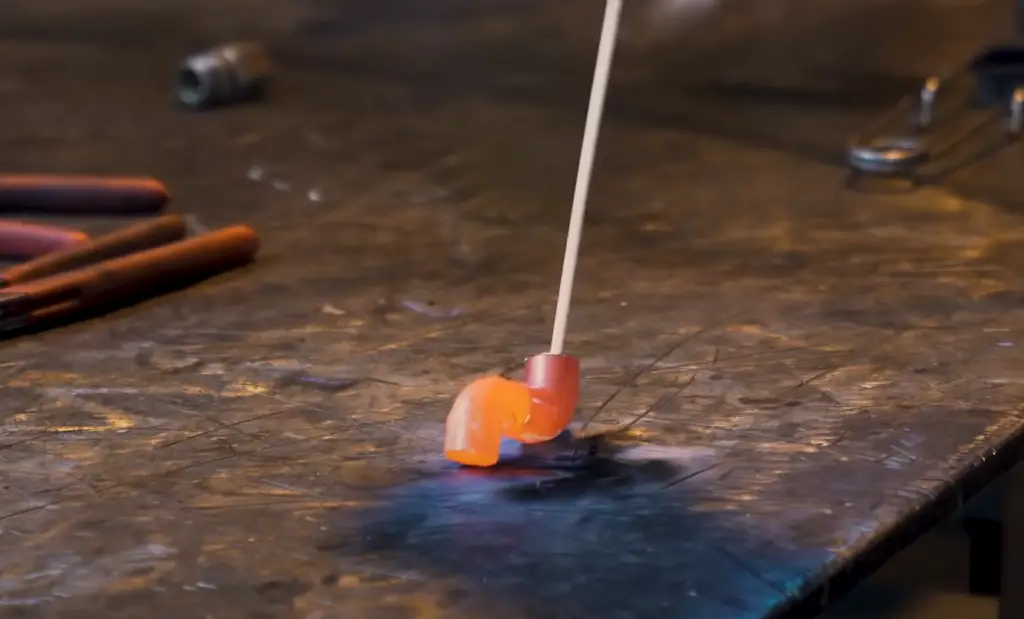
You need to choose the right type of brass depending on the job. For example, nickel-silver brazing rods are better for plumbing applications, while copper-silicon alloy is more suitable for welding heavier pieces.
What are the benefits of welding brass?
Welding brass has many advantages. It creates strong and long-lasting joints, so you can be sure that your project will stand up to the test of time. Welding also provides a permanent connection, meaning it won’t come apart easily.
Another benefit is that you don’t have to worry about rust or corrosion. Brass is a non-ferrous metal, so it won’t corrode like some other metals. This makes it ideal for outdoor applications where it might be exposed to the elements.
Finally, welding allows you to join two pieces of brass without having to use adhesive or mechanical fasteners. This can save time and money, as well as make your projects more aesthetically pleasing.
How can I be sure that my welds are strong?
The key to strong welds is preparing the metals. You need to make sure they are clean and free of any contaminants. This will help the weld be strong. It’s also important to choose the right settings and filler material for your project.
You should also use the right safety equipment and follow all the instructions. This will help ensure that you create a strong joint that will last for years to come.
Why should I use a professional welder for my project?
Using a professional welder can be beneficial in many ways. Professional welders have experience and knowledge of the best techniques and materials to use when working with brass.
Does welding brass require any special tools or techniques?
You need some special things to weld brass. You need the right equipment and settings. It is also important to have a good understanding of filler materials and safety precautions so that you can create strong, long-lasting joints.
Do I need any special training to weld brass?
Yes, you should take a welding class or find a professional welder who can teach you the basics. It is important to learn the right techniques and safety measures so that you can work with brass safely and efficiently.
Should I use a professional welder for my project?
It is always best to use a professional welder when welding brass. Professional welders have the experience and knowledge of the best techniques and materials to use, as well as access to specialised equipment that can help you create strong and long-lasting joints quickly and safely.
That being said, if you are confident in your welding skills and have the right tools, it is possible to weld brass on your own.
How do I use a welder to weld brass?
Welding brass is not complicated, but it does require practice and skill. To start, prepare the metals you want to join by making sure they are clean. Then choose the right filler material and settings for your project.
Once that is done, put on all of the safety gear needed and follow the instructions provided by your welder. Finally, make sure to practise good technique and be careful in order to create strong joints.
Why should I weld brass?
Welding brass is an excellent choice for many projects. It provides a strong, permanent connection that won’t rust or corrode over time. It also allows you to join two pieces of metal without having to use adhesives or mechanical fasteners, which can save time and money. Finally, welding gives you the flexibility to create aesthetically pleasing designs.
Are there any risks associated with welding brass?
There are some risks that come with welding brass. You could get hurt if you don’t use the right safety equipment or if you don’t follow the instructions. You might also be exposed to fumes and heat, which could be dangerous for your health.
Is welding brass difficult?
Welding brass is not necessarily difficult, but it does require practice and skill. You need to choose the right filler material and settings for your project, prepare the metals properly, and use all of the necessary safety precautions.
Do I need to use any special tools when welding brass?
Yes, you need some specialised equipment and settings in order to weld brass effectively. This includes a welder with the right amperage and voltage, as well as the necessary filler material.
Professional welders have access to these tools, but if you are welding brass on your own, make sure to invest in the right equipment.
Can I weld brass outdoors?
Yes, you can weld brass outdoors. However, it is important to take all of the necessary safety precautions when working with open flames and hot metals.
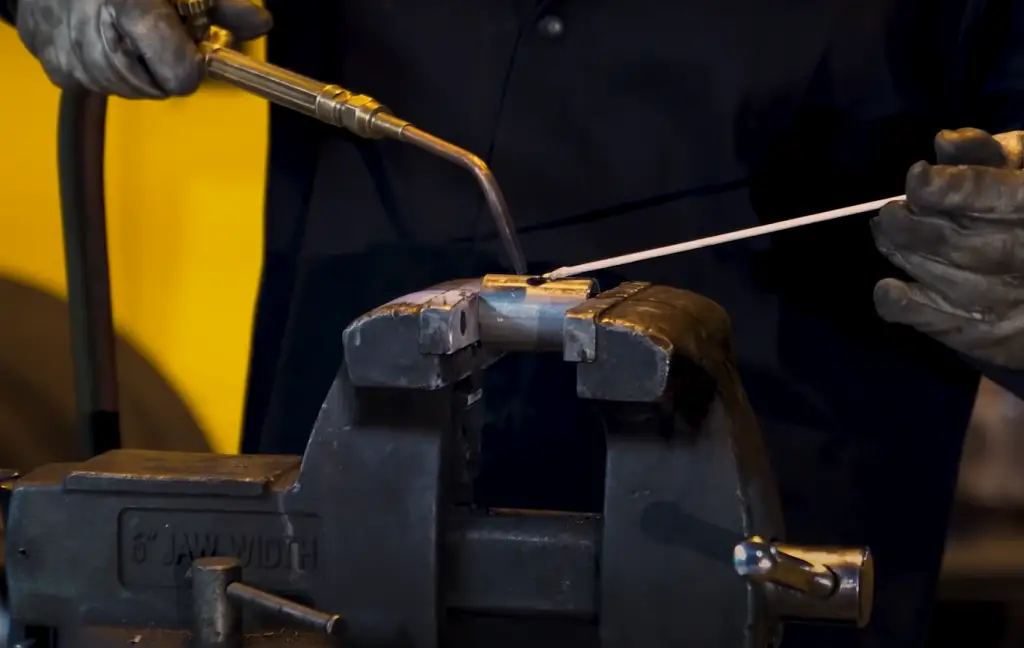
Make sure that you have plenty of ventilation and use a welding curtain or shield to protect yourself from sparks and flying debris. Additionally, make sure to keep your workspace clean and free of combustible materials.
How often should I inspect my welds?
It is important to inspect your welds after each use. This will help you ensure that the welds are strong and free of any defects. Additionally, it is a good practice to check for cracks or other weaknesses in the metal before using the joints.
Finally, make sure to monitor your tools and replace worn parts as needed in order to maintain the quality of your welds.
Useful Video: Want To Be Able To Fix Almost Anything? Then Learn How To Weld With Brass!
Conclusion
Generally speaking, you can weld brass. However, the results may be unpredictable depending on the type of brass and which welding technique you chose. Further, because brass is not magnetic and is prone to warping during welding, additional precautions must be taken for more challenging projects.
Ultimately, if you have brass welding needs, it’s best to consult a professional who can provide advice and guidance on how best to address the project.
By doing so, you can protect yourself and ensure that the job is done right in the safest way possible. In conclusion, brass welding may seem intimidating but with some knowledge and preparation it can be an achievable process!
References:
- https://weldingheadquarters.com/how-to-weld-brass/
- https://waterwelders.com/how-to-weld-brass/

